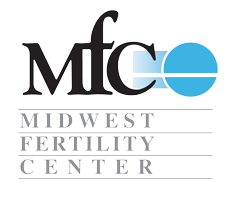When it comes to in vitro fertilization (IVF), one of the most critical components determining the chances of a successful pregnancy is the quality of the embryos. While it’s easy to assume that embryo quality is simply about a “healthy” embryo, the reality is far more complex. Understanding what makes an embryo viable and of high quality can help both patients and practitioners improve their approach to IVF and fertility treatments.
1. Genetic Composition
One of the most significant factors that influence embryo quality is its genetic makeup. Healthy embryos should have a normal number of chromosomes (euploid embryos). In contrast, those with an abnormal number of chromosomes (aneuploid embryos) may either fail to implant or result in miscarriage.
Genetic testing of embryos, like Preimplantation Genetic Testing for Aneuploidy (PGT-A), is often used to assess whether embryos have a normal chromosomal structure. This ensures that only genetically viable embryos are selected for transfer, improving the chances of successful implantation and reducing the risk of miscarriage.
2. Morphology: The Appearance of the Embryo
Embryologists often assess embryos based on their morphology (shape, size, and development stage) under a microscope. They look for several factors:
– Blastocyst formation: A healthy embryo typically develops into a blastocyst by day five or six after fertilization. The presence of a well-formed blastocyst indicates strong developmental potential.
– Cell uniformity: Embryos with evenly sized cells and minimal fragmentation (cellular debris) are considered of higher quality.
– Inner cell mass (ICM) and trophectoderm (TE) quality: In the blastocyst stage, the ICM gives rise to the fetus, while the TE becomes the placenta. Both must be well-formed for successful implantation and pregnancy.
Though morphology is an essential factor in assessing embryo quality, it’s not always an accurate predictor of genetic health or implantation success. Therefore, many clinics now combine morphological assessment with genetic testing.
3. Developmental Timing
Embryos follow a specific development timeline, with particular milestones that they need to reach at precise times. For instance:
– Day 1: Fertilization is confirmed by the presence of two pronuclei.
– Day 3: The embryo should have divided into 6–8 cells.
– Day 5–6: The embryo reaches the blastocyst stage.
Embryos that reach each stage within the expected timeframe are more likely to result in successful pregnancies than those that develop too slowly or too quickly. Proper timing reflects the embryo’s ability to divide and differentiate, both of which are key to its quality.
4. Embryo Energy (Mitochondrial Health)
The energy capacity of an embryo, driven by its mitochondria (the energy-producing centers of cells), plays a pivotal role in its ability to grow and implant. Recent research suggests that embryos with a higher mitochondrial DNA content may have a better chance of implantation. Some IVF clinics now offer testing for mitochondrial function to further assess embryo viability, although it is still considered an emerging area of study.
5. Egg and Sperm Quality
Embryo quality begins with the health of the sperm and egg. Poor-quality eggs or sperm—due to factors like age, lifestyle habits (smoking, drinking), or underlying health conditions—can lead to chromosomal abnormalities or developmental problems.
– Egg quality declines with age, particularly after a woman reaches her mid-30s. Older eggs are more likely to result in embryos with chromosomal abnormalities, which can cause implantation failure or miscarriage.
– Sperm quality is also crucial. Poor sperm morphology, motility, or count can compromise embryo development. While men continue to produce sperm throughout their lives, advanced paternal age can also affect sperm quality.
6. Laboratory Conditions
Embryos are incredibly sensitive to the environment in which they are grown. The conditions within an IVF lab, such as temperature, pH levels, and oxygen concentrations, can significantly affect embryo development. Advanced incubators and careful monitoring help maintain optimal conditions, promoting the best possible embryo quality.
7. Embryo Grading: A Tool for Selection
Many fertility clinics use embryo grading systems to rank embryos based on their morphology and stage of development. Grading helps embryologists decide which embryos to transfer and which to freeze for future use. While grading systems can vary slightly between clinics, they generally assign letter grades or numerical values based on the embryo’s appearance.
For example:
– Grade 1 (or A): Optimal embryo with uniform cells and minimal fragmentation.
– Grade 2 (or B): Good quality with some minor irregularities in cell size or fragmentation.
– Grade 3 (or C): Lower quality, but still potentially viable.
It’s important to note that embryo grading is not an exact science. Some embryos that appear lower quality based on their grade may still result in a healthy pregnancy, while some highly graded embryos may not implant.
8. Frozen vs. Fresh Embryos
Embryo freezing has become a routine part of many IVF protocols. Both fresh and frozen embryos can result in successful pregnancies, but frozen embryos have some unique advantages. The freezing process allows for genetic testing before transfer, and the delay gives the patient’s body time to recover from ovarian stimulation, potentially improving the uterine environment for implantation.
Some studies have shown that frozen embryos may actually have higher success rates than fresh ones, as the embryo’s viability is preserved while ensuring that the uterine environment is optimal.
The journey to selecting a high-quality embryo is a nuanced process, influenced by genetic factors, morphological assessments, and laboratory conditions. For couples undergoing IVF, understanding these variables can offer reassurance and empower them to make informed decisions during their fertility journey.
While the science continues to evolve, the goal remains the same: to select the healthiest, most viable embryos to give hopeful parents the best chance at a successful pregnancy. Through a combination of advanced techniques and individualized care, many families are achieving their dreams of parenthood.

